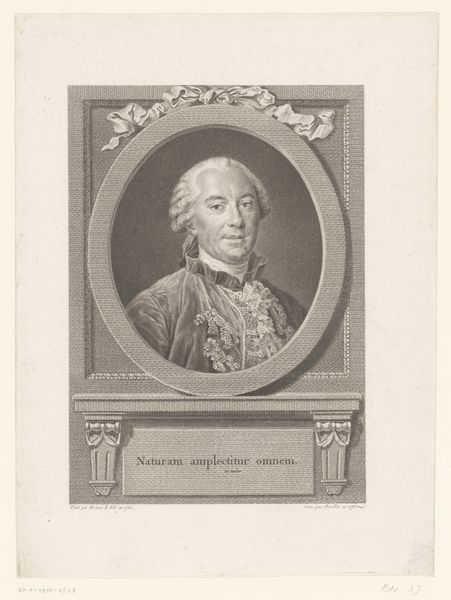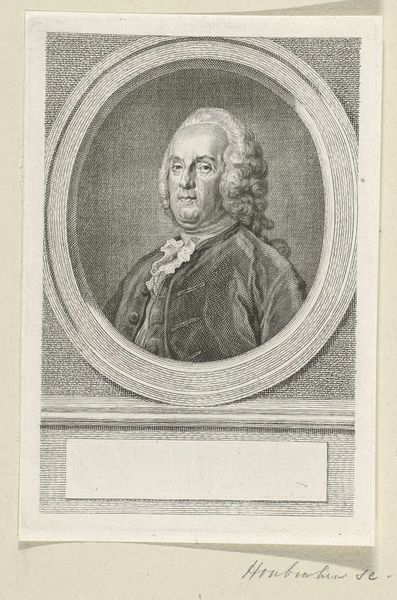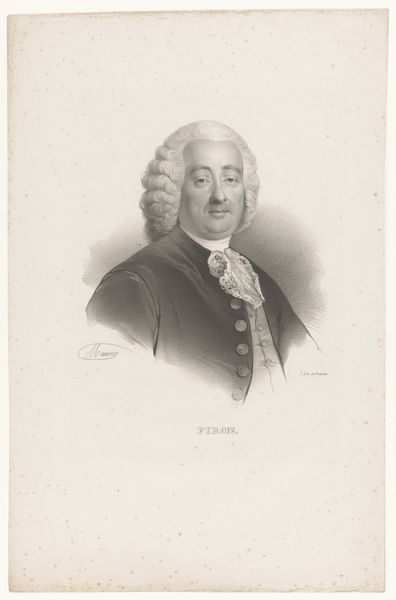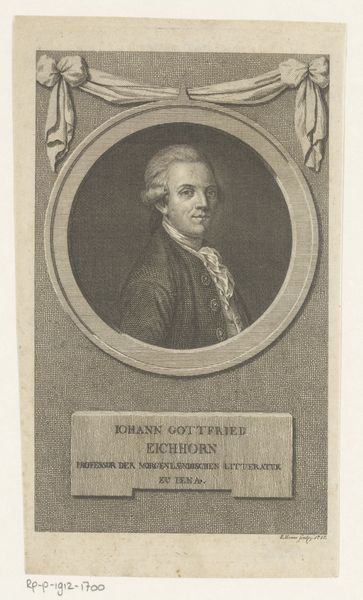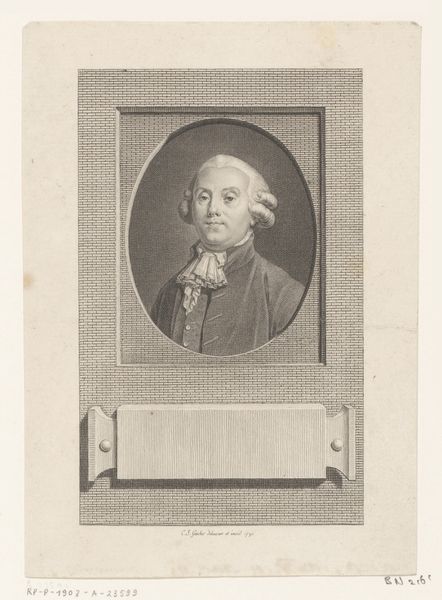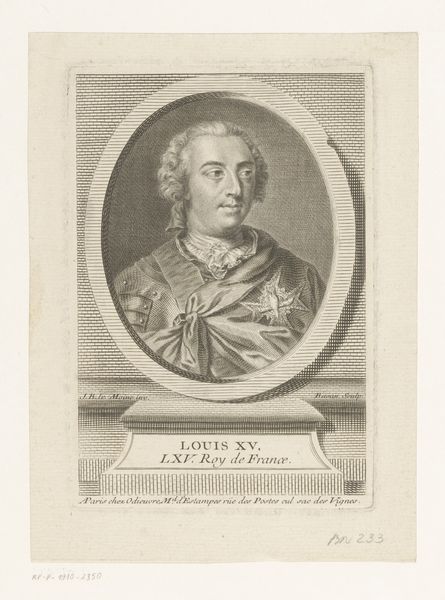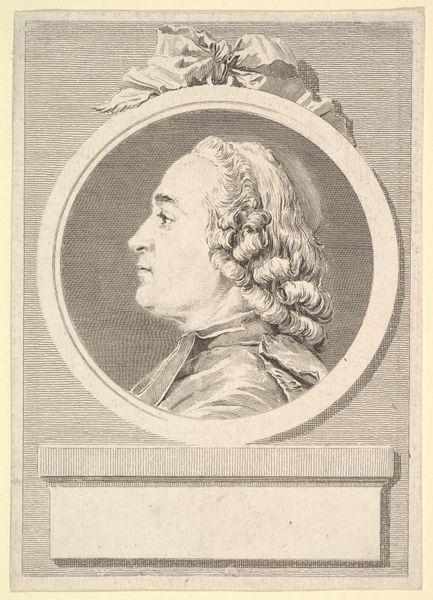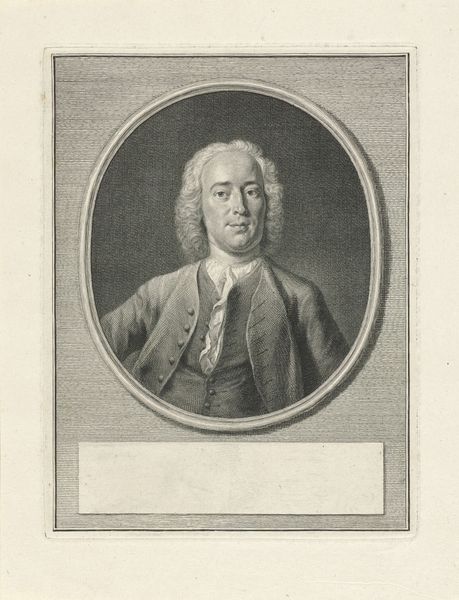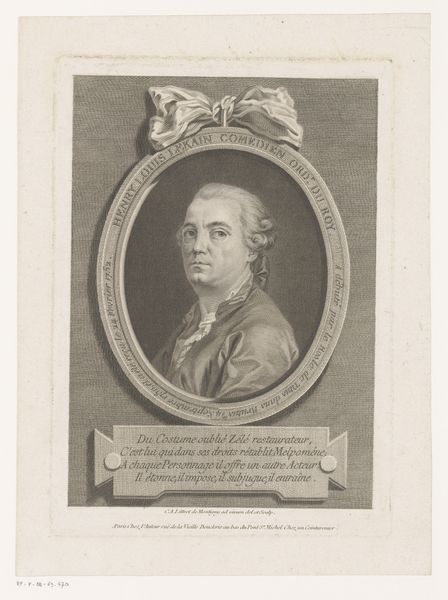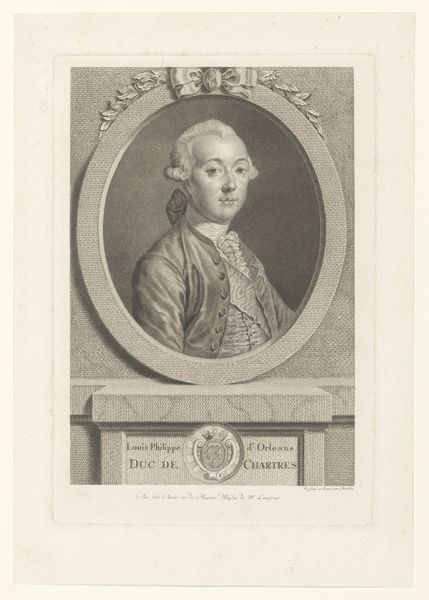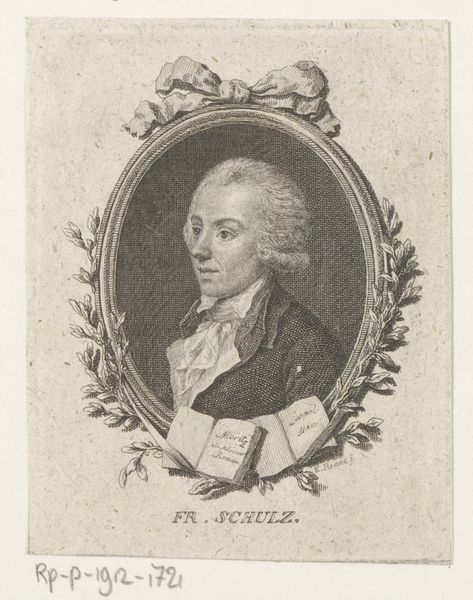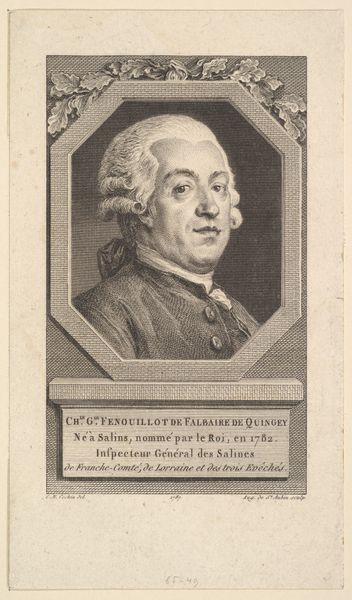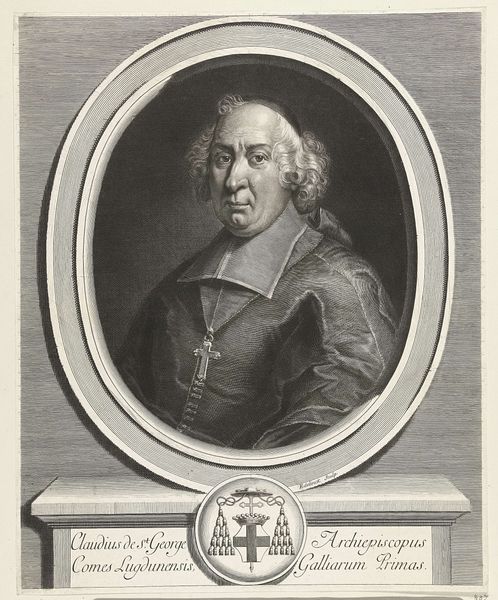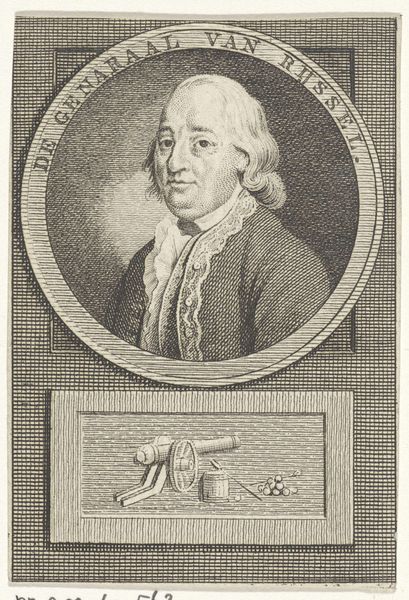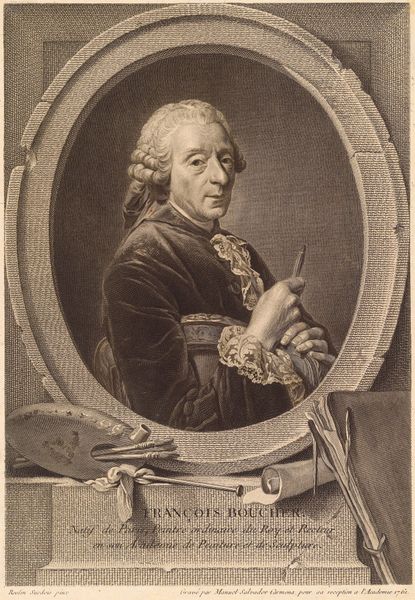
print, engraving
#
portrait
# print
#
engraving
#
rococo
Copyright: National Gallery of Art: CC0 1.0
Editor: Here we have a print entitled "Francois Boucher," an engraving, showcasing the portrait of the artist himself. It has a certain reserved formality, yet there’s also something almost… cheeky about his expression. What do you make of it? Curator: Well, the Rococo period loved that playful tension! The frame, like a slightly wonky looking glass, suggests reflection – both his and ours. You see how the lines, though precise, feel almost casual? I always imagine Boucher winking at his own image, and then at us, across the centuries. It's interesting how such controlled lines, typical of engraving, still manage to convey this spontaneity. Isn’t it marvelous? Editor: I do find the frame quite unusual, almost like it’s precariously hung there! The textures seem deliberately flat, quite unlike the lush scenes he’s known for in his paintings. Is it a trick of the print medium, maybe? Curator: Precisely! The medium *is* the message, to paraphrase that media theorist Marshall McLuhan! Engraving forces a distilled elegance, trading overt sensuality for a witty precision. Consider how his self-awareness might have informed its creation – Boucher presenting *Boucher* in a most calculated manner! It’s like a stage persona, and we're the audience. What do you think of his carefully styled wig? Editor: It adds to that theatricality, definitely. I guess I'd never thought of prints as having a similar impact as paintings... almost more accessible! Curator: They brought art to a wider audience, absolutely! And this print invites a more intimate dialogue. Next time you think about accessibility, remember that even a wink can be a revolution in its own, quiet way. Editor: That makes me see this work completely differently now. Curator: Me too, every time! Isn't art wonderful that way?
Comments
No comments
Be the first to comment and join the conversation on the ultimate creative platform.
